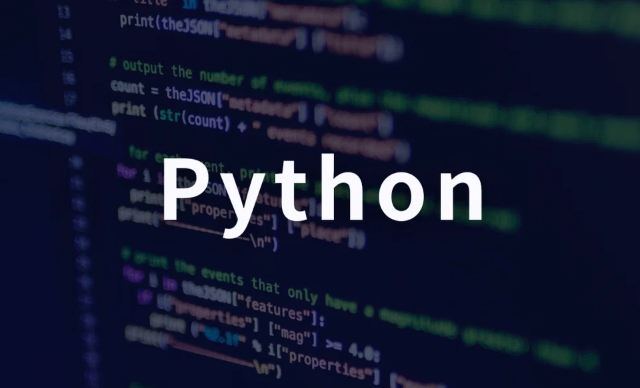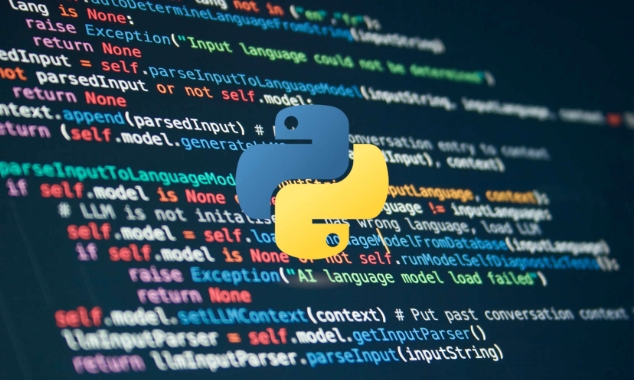What is the default return value of a Python function
Jul 12, 2025 am 02:50 AMPython functions return None by default if no return statement is provided. 1. Functions without a return statement automatically return None, even if they perform actions like printing or modifying variables. 2. This behavior ensures consistency, signals the absence of a meaningful return value, and prevents undefined errors. 3. Common issues arise when developers mistakenly use the result of such functions, confuse print() with return, or misunderstand in-place methods like .sort(). 4. To avoid bugs, always verify return values, be cautious during refactoring, and consult documentation or test functions independently.

Python functions return None by default if no explicit return statement is provided. That’s the basic rule, but understanding when and why this happens helps avoid bugs and confusion in your code.

What Happens When a Function Doesn't Return Anything
If you define a function without a return statement, Python automatically returns None. For example:
def say_hello():
print("Hello")
result = say_hello()
print(result) # Output: NoneHere, even though the function prints something, it doesn’t return anything explicitly. So result ends up being None.

This behavior applies to all kinds of functions — whether they perform actions like printing, modifying variables, or interacting with external data.
Why Does Python Return None by Default?
Returning None makes sense as a fallback because:

- It's consistent: Every function call must return something.
- It signals that the function wasn't meant to produce a value.
- It avoids errors like trying to use an undefined return value.
So when a function is used just for its side effects (like changing a variable or printing output), returning None tells you and other developers that there's no result to expect.
Common Cases Where This Matters
You'll often run into this when:
- You forget to add a
returnin a helper function. - You're chaining function calls and expect a value but get
None. - You're using methods that modify objects in place (e.g., list methods like
.sort()).
Some typical mistakes include:
- ? Using the result of a function that doesn’t return anything useful.
- ? Confusing
print()withreturnduring debugging. - ? Misunderstanding how built-in methods behave (like
.append()vs creating a new list).
To avoid issues:
- Always check what a function returns, especially if you plan to use that value later.
- Be cautious when refactoring — removing a
returnaccidentally can break things. - Read documentation or test functions in isolation if unsure.
That’s how Python handles function returns by default. It’s simple, but knowing how and when None shows up helps write more predictable code.
The above is the detailed content of What is the default return value of a Python function. For more information, please follow other related articles on the PHP Chinese website!

Hot AI Tools

Undress AI Tool
Undress images for free

Undresser.AI Undress
AI-powered app for creating realistic nude photos

AI Clothes Remover
Online AI tool for removing clothes from photos.

Clothoff.io
AI clothes remover

Video Face Swap
Swap faces in any video effortlessly with our completely free AI face swap tool!

Hot Article

Hot Tools

Notepad++7.3.1
Easy-to-use and free code editor

SublimeText3 Chinese version
Chinese version, very easy to use

Zend Studio 13.0.1
Powerful PHP integrated development environment

Dreamweaver CS6
Visual web development tools

SublimeText3 Mac version
God-level code editing software (SublimeText3)

Hot Topics
 Three ways to get thread return value in Python
Apr 13, 2023 am 10:43 AM
Three ways to get thread return value in Python
Apr 13, 2023 am 10:43 AM
When it comes to threads, your brain should have this impression: we can control when it starts, but we cannot control when it ends. So how do we get the return value of the thread? Today I will share some of my own practices. Method 1: Use a list of global variables to save the return value ret_values ??= [] def thread_func(*args): ... value = ... ret_values.append(value) One reason to choose a list is: the append() of the list Methods are thread-safe, and in CPython, the GIL prevents concurrent access to them. If you use a custom data structure, and
 Introduction to Python functions: Usage and examples of abs function
Nov 03, 2023 pm 12:05 PM
Introduction to Python functions: Usage and examples of abs function
Nov 03, 2023 pm 12:05 PM
Introduction to Python functions: usage and examples of the abs function 1. Introduction to the usage of the abs function In Python, the abs function is a built-in function used to calculate the absolute value of a given value. It can accept a numeric argument and return the absolute value of that number. The basic syntax of the abs function is as follows: abs(x) where x is the numerical parameter to calculate the absolute value, which can be an integer or a floating point number. 2. Examples of abs function Below we will show the usage of abs function through some specific examples: Example 1: Calculation
 Introduction to Python functions: Usage and examples of isinstance function
Nov 04, 2023 pm 03:15 PM
Introduction to Python functions: Usage and examples of isinstance function
Nov 04, 2023 pm 03:15 PM
Introduction to Python functions: Usage and examples of the isinstance function Python is a powerful programming language that provides many built-in functions to make programming more convenient and efficient. One of the very useful built-in functions is the isinstance() function. This article will introduce the usage and examples of the isinstance function and provide specific code examples. The isinstance() function is used to determine whether an object is an instance of a specified class or type. The syntax of this function is as follows
 How to solve the problem that scanf return value is ignored
Nov 14, 2023 am 10:01 AM
How to solve the problem that scanf return value is ignored
Nov 14, 2023 am 10:01 AM
Solutions to the ignored return value of scanf include checking the return value of scanf, clearing the input buffer, and using fgets instead of scanf. Detailed introduction: 1. Check the return value of scanf. You should always check the return value of the scanf function. The return value of the scanf function is the number of successfully read parameters. If the return value is inconsistent with the expected one, it means that the input is incorrect; 2 , Clear the input buffer. When using the scanf function, if the input data does not match the expected format, the data in the input buffer will be lost, etc.
 How to fix hardcoded errors in Python's functions?
Jun 25, 2023 pm 08:15 PM
How to fix hardcoded errors in Python's functions?
Jun 25, 2023 pm 08:15 PM
With the widespread use of the Python programming language, developers often encounter the problem of "hard-coded errors" in the process of writing programs. The so-called "hard coding error" refers to writing specific numerical values, strings and other data directly into the code instead of defining them as constants or variables. This approach has many problems, such as low readability, difficulty in maintaining, modifying and testing, and it also increases the possibility of errors. This article discusses how to solve the problem of hard-coded errors in Python functions. 1. What is hard
 Introduction to Python functions: functions and examples of filter functions
Nov 04, 2023 am 10:13 AM
Introduction to Python functions: functions and examples of filter functions
Nov 04, 2023 am 10:13 AM
Introduction to Python functions: The role and examples of the filter function Python is a powerful programming language that provides many built-in functions, one of which is the filter function. The filter function is used to filter the elements in the list and return a new list composed of elements that meet the specified conditions. In this article, we will introduce what the filter function does and provide some examples to help readers understand its usage and potential. The syntax of the filter function is as follows: filter(function
 Introduction to Python functions: usage and examples of dir function
Nov 03, 2023 pm 01:28 PM
Introduction to Python functions: usage and examples of dir function
Nov 03, 2023 pm 01:28 PM
Introduction to Python functions: Usage and examples of dir function Python is an open source, high-level, interpreted programming language. It can be used to develop various types of applications, including web applications, desktop applications, games, etc. Python provides a large number of built-in functions and modules that can help programmers write efficient Python code quickly. Among them, the dir function is a very useful built-in function, which can help programmers view the properties and methods in objects, modules or classes.
 Use Java's Math.min() function to compare the size of two numbers and return the smaller value
Jul 25, 2023 pm 01:21 PM
Use Java's Math.min() function to compare the size of two numbers and return the smaller value
Jul 25, 2023 pm 01:21 PM
Use Java's Math.min() function to compare the sizes of two numerical values ??and return the smaller value. When developing Java applications, sometimes we need to compare the sizes of two numerical values ??and return the smaller number. Java provides the Math.min() function to implement this function. The Math.min() function is a static method of the JavaMath class. It is used to compare the size of two values ????and return the smaller number. Its syntax is as follows: publicstaticintmi






